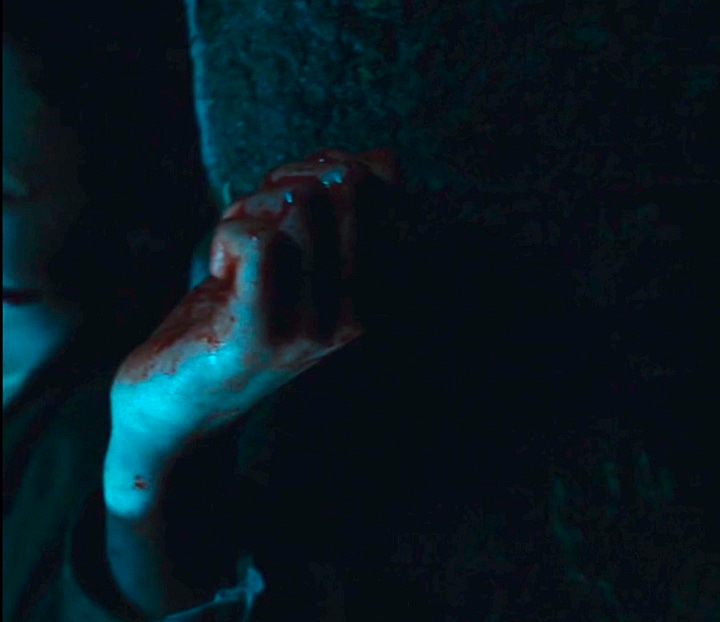Strong Openings: PAN'S LABYRINTH
Opening scenes can shock, excite, confuse, foreshadow, introduce characters, establish world rules, and more. Beyond simply setting a tone, they start teaching the audience how to ‘read’ the movie — style, point of view, whether they lie or tell the truth (for example, if what a narrator says is at odds with images shown, the audience knows they are unreliable), are all crucial to forging the filter which colours how an audience processes and interprets the rest of the film.
No pressure.
Today we’re looking at what Pan’s Labyrinth’s opening shots tell us about Ofelia and the world which destroyed her.
That’s not a spoiler; the opening scene tells us her death through voiceover and visuals.
How it lays that information out puts the audience in Ofelia’s doomed shoes, and sets us up for the fanciful, dark, beautiful, gruesome story to come.
From Jim Emerson’s opening shots series:
“Pan’s Labyrinth” is so locked into the emotional and fantasy world of its protagonist, Ofelia (Ivana Baquero), that the camera itself lies on its side next to her and is then plunges vertiginously into her pupil, entering her head, where the movie takes place. This initial dazzling sweep (actually a composite shot, but executed in once continuous motion) sucks us into the movie so quickly that we barely register what we’ve seen until the end, when we remember these prophetic first few seconds from the start of the movie.
Tied Together
Ofelia’s breathing starts over the black (side note: never trust a filmmaker who says audio doesn’t matter). This is the first of many tie-ins between what we experience and what the narrator says. Though the narrator’s words aren’t all ‘in time’ with the pictures illustrating them, words, images, and audio tie together many ways.
We hear Ofelia’s last gasps, later the narrator talks of a king waiting “until he drew his last breath” for his princess daughter.
The film’s first shot travels right to left, a direction often used to indicate something happened in the past, and the narrator’s opening words are “a long time ago”.
The camera / we enter the fairy tale through Ofelia’s eye; soon after, the narrator says the princess was ‘blinded by the sun,’ then the camera / we tilt up and are temporarily ‘blinded’ as a white light completely overtakes the screen.
“and eventually, [the princess] died” come over a skull lying amidst stones and grass; despite using language of a fairy tale, the images assert this narrator is telling the truth. The tale being true is key because . . .
“the world stopped turning” coincides with Ofelia turning the page of her fairy tale book, conflating both worlds as though saying neither is more ‘real’ than the other.
All this underlines Pan’s Labyrinth is about truth, in all its beauty and horror.
Compare and Contrast
More than just tying images to words, multiple shots invite direct comparisons.
The skull lying amidst stones and grass echoes the surroundings and position we saw Ofelia in in the opening shot.
The opening shot reveals Ofelia’s hand first; even once it tracks over further and we see more of her, the hand is in focus before the shot racks to her face. When meeting her in the ‘before’, the shot opens on her hand turning the page of a book; tying both Ofelias together visually.


Not everything is a mirror; the shots are also contrasted, partly so we can clearly tell which world is which.
Where Ofelia and the Princess both started in blue and cold, once she escapes the shots are warm and orange.
After we enter Ofelia’s world, the camera shifts to move left-to-right; not only because the narrator is telling us the fairy tale Ofelia is dreaming / remembering / living / reading, but because we’re entering the story at a point when Ofelia is alive. We’ve flashed back and begin moving forward in her story, as the scene in the car will quickly establish more concretely.
Takeaways
It’s always tricky when you tell the audience exactly how the story is going to end — especially when that ending involves a child dying. Pan’s Labyrinth negotiates that by intertwining Ofelia’s death with fairy tales — something notoriously grim but also laced with grand potential and often a moral takeaway.
In addition (as Emerson’s review beautifully observes) the opening moves quickly with so much information and grandeur we are swept up in the story before we can dwell on the sadness.
Finally, every choice from camera movement to colour to sound mix is balanced to set the stage for the story to come, carefully establishing tone, world, style, POV, and more, which the rest of the movie will carry out.
When considering your opening shots, ask how they can most effectively set the audience up not only for the plot, but the way the rest of your story is told.
IMDB
Additional Reading
Pan’s Labyrinth use of Match Cut [INSERT LINK TO SOCIALS POST HERE]





